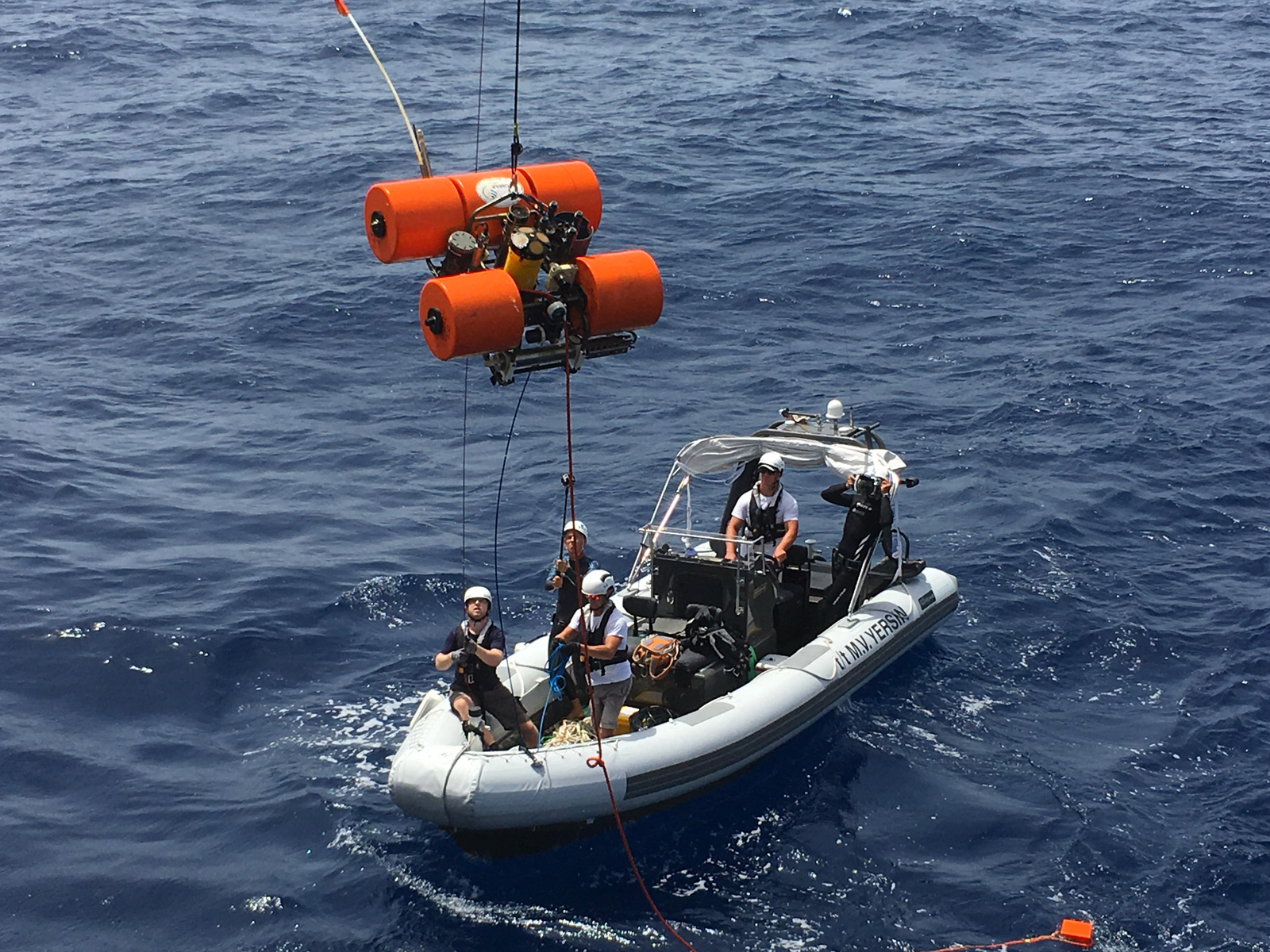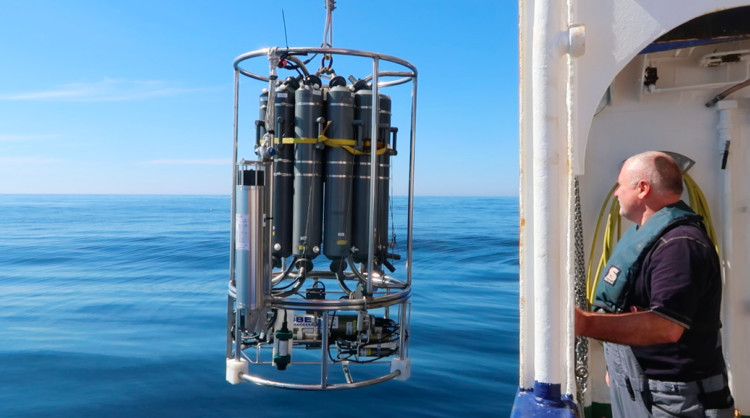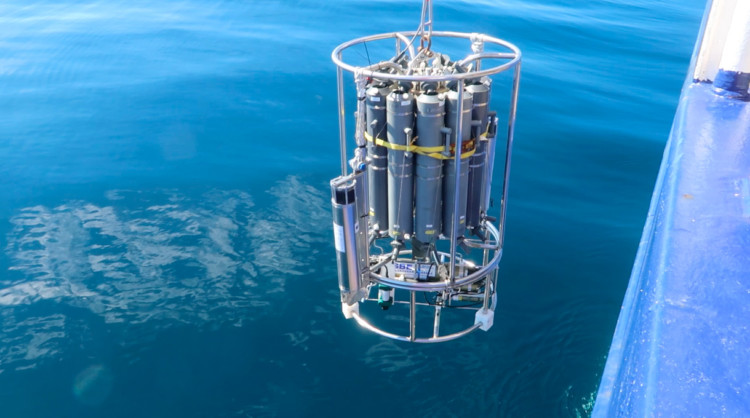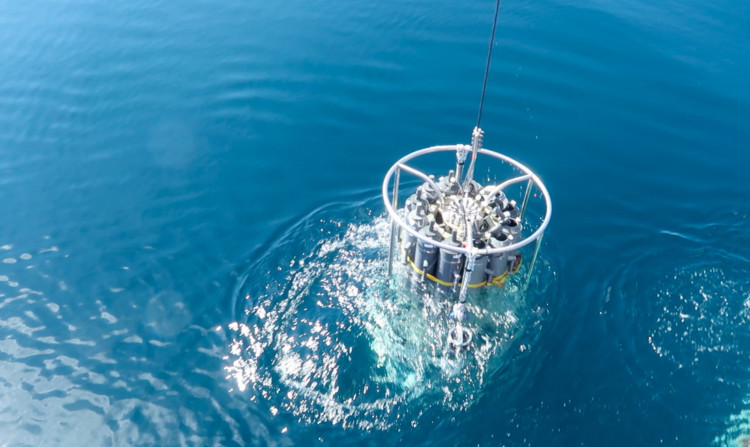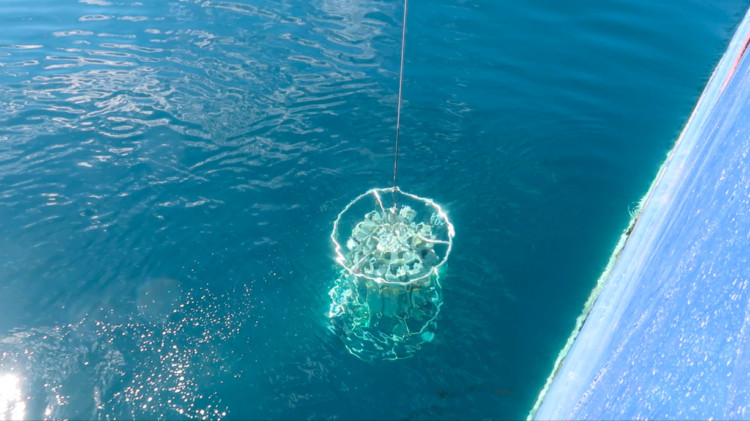In Norway with Geomar and the Centre Scientifique de Monaco, we used a rosette with 12 Niskin bottles. The goal was to collect water by the reef we were studying in order to understand what kind of prey is feeding the coral.
“First the water was filtered on a 180µm mesh to retrieve the macrozooplankton…” said Magali Boussion, senior technician in the Ecophysiology team of the Marine Biology Department, Scientific Centre of Monaco “…and then re-filtered on GF/F filters to collect the mesoplankton. The plankton will then be analyzed for its natural ∂13C and ∂15N isotopic signature. The comparison with the isotopic signature of the coral tissue will help us to understand the type of prey on which corals are feeding.”
Photos © Geomar.
During our mission with Geomar in the Norwegian seas we have used a specific tool.
JAGO is its name.
it’s a manned submersible dedicated to exploration and research in marine sciences. It allows researchers to go to a depth of 400 meters.
Its weight is 3 tons and its size is 3 x 3 x 2.5 m
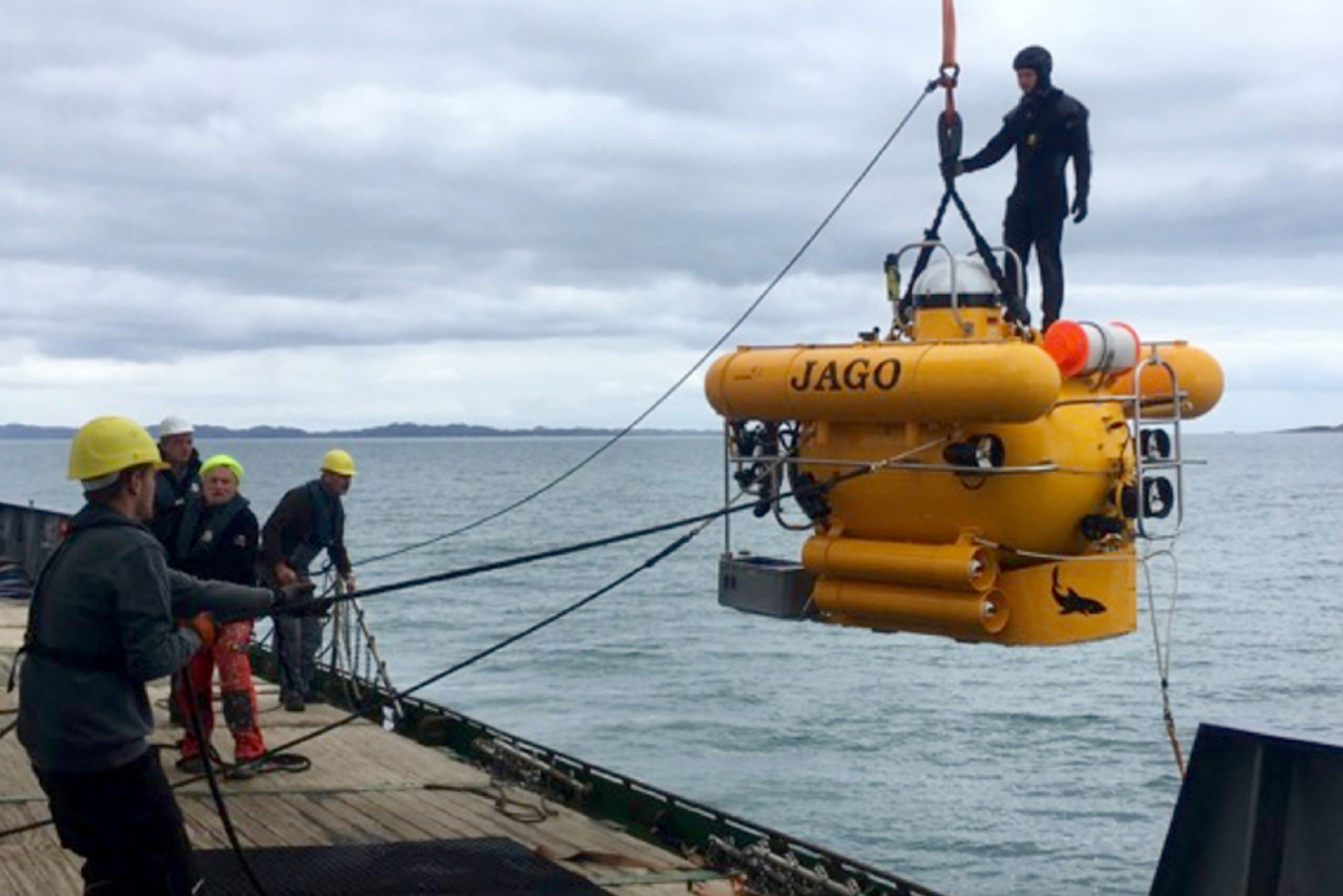
Piloted by and operator, the submersible moves underwater without being connected by an umbrilical cable to a support ship.
Its robotic arm is very efficient to collect specific organisms, solid, gas or water samples and its digital cameras can give photo or video views from the seafloor.
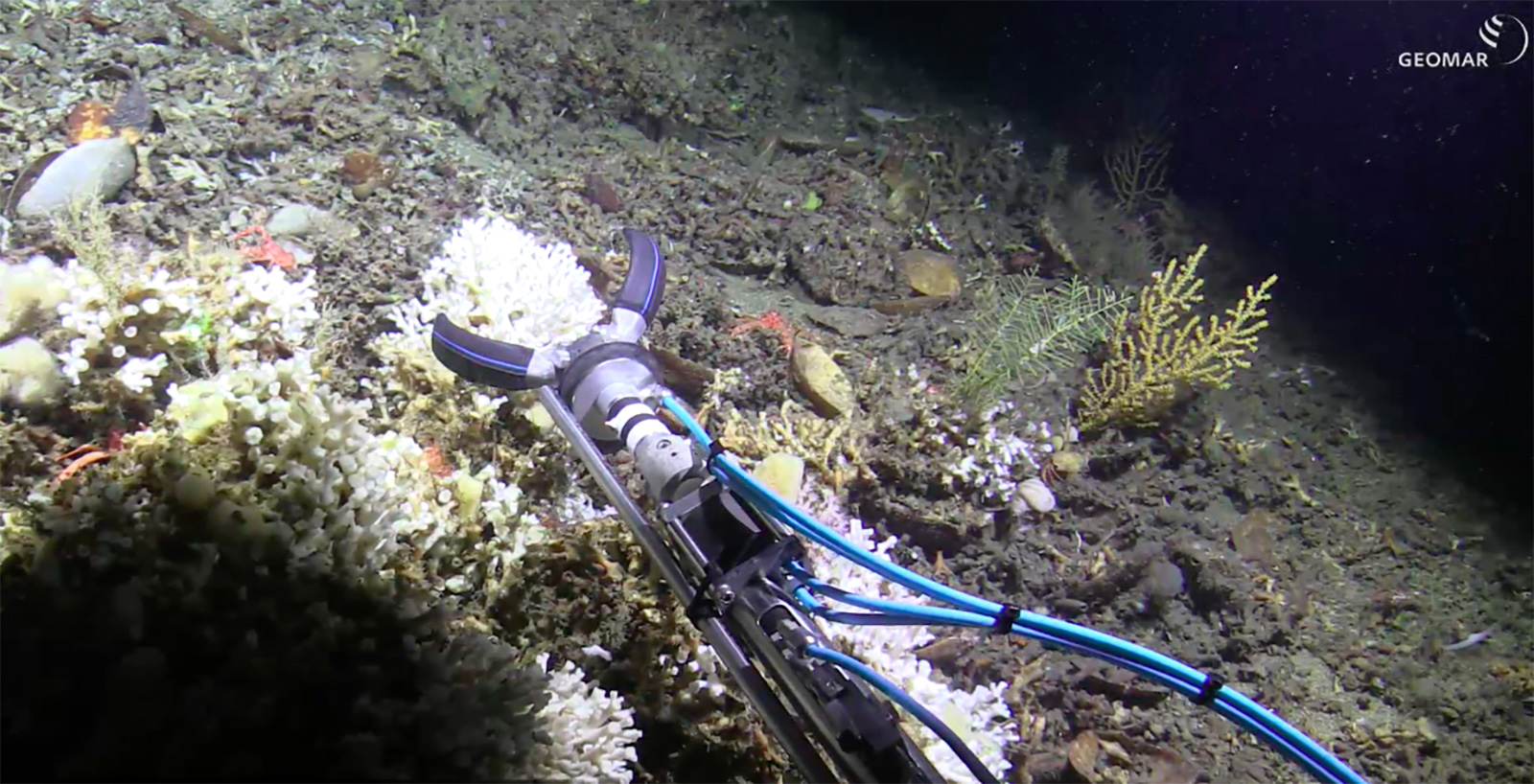
JAGO is presently the only manned research submersible in Germany.
It belongs to Geomar and is a new example of the deep and strong collaboration between Monaco Explorations and the German institute.
This common work started in Cabo-Verde In September 2017 to retrieve and put back on seafloor a bottom lander and launch a wave glider.
